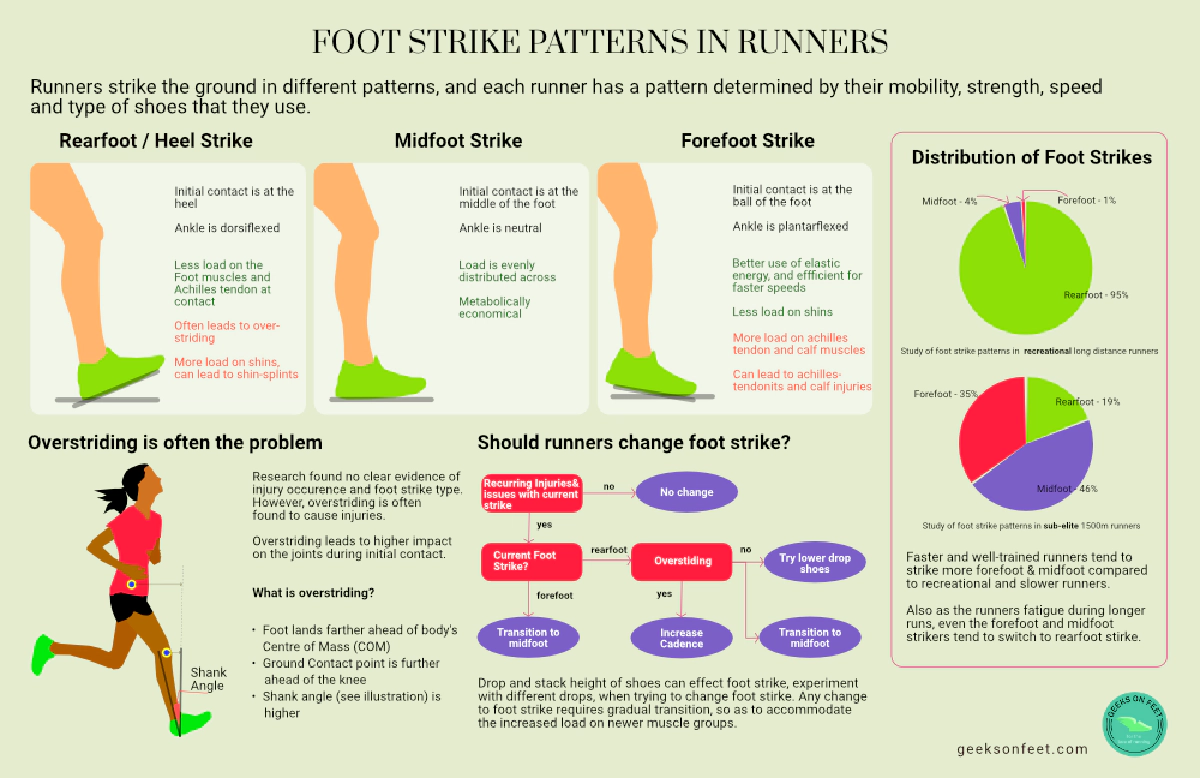
[Download high resolution graphic] (./../../img/2020/11/foot-strike-hd.png)
Foot strike is often the point of debate among runners. Which foot strike is better? Midfoot, rearfoot or forefoot?
Runners strike the ground in different patterns, and each runner has pattern determined by their mobility, strength, speed and type of shoes they wear.
Foot strike Patterns change based on the competency and experience levels of runners.
Recreational Runners - Recreational long distance often use rearfoot/heel strike pattern. Studies show 95% of these runners are heel strikers. 4% are midfoot strikers, and 1% are forefoot strikers.
Sub Elite/Elite Runners - Shorter distance sub-elite/elite runners often use forefoot/midfoot strike pattern. Studies show 46% of these runners are midfoot strikers. 35% are forefoot strikers, and 19% are rearfoot strikers.
Foot strike also get effected by fatigue. Studies show that even the midfoot/forefoot strikers switch to heel strike towards the later of the races, as they fatigue.
Research found no clear evidence of foot strike and its relation to injuries. However, overstriding often to cause several knee/shin injuries. Overstriding leads to higher impact on the joints during initial contact.
What is Overstrding?
The answer is no mostly, unless there is strong reason to do. Some of the reasons why one might want to consider changing foot strike.
Shoes and sensory perception at the feet, can cause change in foot strike. For example, minimalistic shoes and shoes with lower drop can influence the runners to switch midfoot and forefoot strike.
Compiled by Team GeeksOnFeet for the love of running!
If you are a running enthusiast, follow us on our social media channels @geeksonfeet on Twitter, and GeeksOnFeet on Instagram and Facebook for updates. Also let us know what running topics you would like to read on.